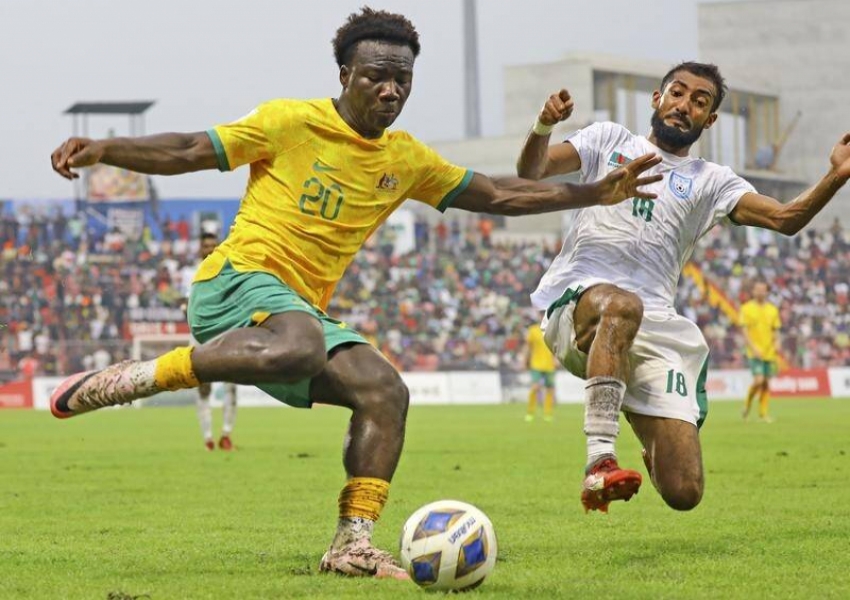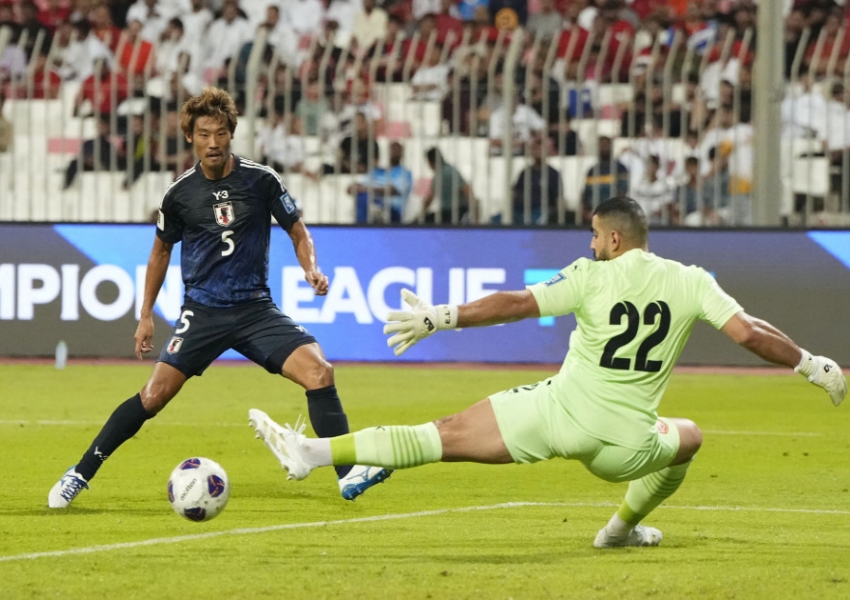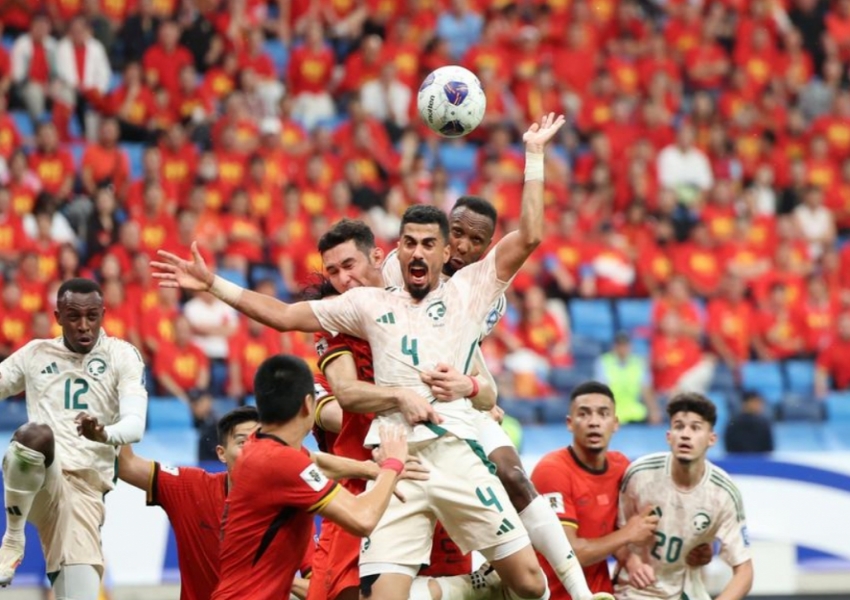AFC World Cup Qualifiers: Australia Finally Welcomes the Rain, Saudi Arabia and Japan Clash Over 3-Back Formations
The third round of the AFC World Cup Qualifiers continues with crucial matchups as teams strive for points to secure a spot in the 2026 FIFA World Cup. On October 10, two highly anticipated games will take place, with Australia hosting China and Saudi Arabia facing Japan. Both matches carry significant weight in the quest for qualification, but the stakes and storylines vary widely. For Australia, a team that has struggled to find the back of the net, this match against China represents a much-needed opportunity to reset. Meanwhile, Saudi Arabia’s clash with Japan presents a tactical showdown, as both teams aim to master the intricacies of the 3-back formation.

Australia vs China – The Drought May Finally End
Australia enters this match as the only team in the 18-team AFC qualifying stage yet to score a goal, a troubling statistic that has already cost head coach Graham Arnold his job. Arnold, who had been at the helm for six and a half years, couldn’t withstand the mounting pressure following two disappointing performances. In their opener against Bahrain, Australia fielded a strong attacking lineup, with three of their four forwards plying their trade in Europe. However, despite their talent, the Socceroos failed to make their dominance count, and the game took a turn for the worse when central striker Adam Taggart was shown a straight red card for a moment of recklessness.

In their second game, a frustrating 0-0 draw away to Indonesia, Arnold made wholesale changes, adjusting his formation from a 4-5-1 to a 4-4-2. Only Craig Goodwin remained from the attacking unit that started the first match. One of the notable inclusions was 18-year-old striker Nestory Irankunda, a promising talent who recently joined Bayern Munich’s youth academy after a breakout season in the A-League. Despite the youthful energy injected into the team, Australia once again failed to break down a well-organized Indonesian side that has been bolstered by a series of naturalized players.

For China, the stakes are equally high after a heartbreaking 2-1 loss to Saudi Arabia in the previous round. Leading both on the scoreboard and in numbers after Saudi midfielder Mohamed Kanno was sent off in the first half, China appeared poised for a crucial victory. However, their inability to manage the game physically ultimately led to their downfall. Saudi Arabia equalized through a set piece before netting a last-gasp winner in stoppage time. The Chinese squad's physical collapse, despite having the numerical advantage, highlighted a fundamental weakness in fitness, which cannot simply be solved through tactical adjustments.
China’s head coach, Dragan Skočić, has faced widespread criticism for his substitutions, with many questioning why key players like Baike Lam were not taken off despite their evident fatigue. Skočić’s rationale is simple: he believes that certain players’ fighting spirit compensates for their technical or physical limitations, while those on the bench, though fresher, lack that same tenacity. From the perspective of an outsider, it’s easy to critique a coach’s in-game decisions, but Skočić is dealing with a complex set of factors that the average fan or pundit might overlook.
As Australia prepares to host China, the mood in the Socceroos camp is one of cautious optimism. After two scoreless games, they desperately need this match against a vulnerable Chinese defense to break their goal-scoring drought. Playing at home, even at 40% of their potential, Australia should have enough firepower to get the job done. On the other hand, if China can replicate the set-piece efficiency they showed against Saudi Arabia, they too could unlock a portion of their attacking potential.
Saudi Arabia vs Japan – A Battle of 3-Back Systems
Saudi Arabia’s last match against China was a rollercoaster of emotions. An early own goal by Saudi defender Hassan Tambakti gave China the lead, and just minutes later, Kanno’s reckless challenge left Saudi Arabia with 10 men. Despite the adversity, Saudi Arabia held firm, equalizing through defender Abdulelah Al-Amri’s header from a corner kick. The game’s intensity grew as both teams squandered opportunities to claim the three points. Saudi Arabia’s resilience shone through late in the match, as head coach Roberto Mancini made three key substitutions in the 80th minute, injecting fresh legs into a tiring side. This move paid off in stoppage time when Saudi Arabia snatched a dramatic victory, leaving China stunned.
Under Mancini’s leadership, one of Saudi Arabia’s key objectives is to perfect the 3-back formation, a system Mancini believes will unlock the team’s full potential. However, the squad’s adaptation to this new setup has been far from smooth. Mancini has repeatedly emphasized the need for his players to understand the subtleties of the system, but against stronger opponents, their lack of familiarity with the formation has often been exposed.
This makes the upcoming match against Japan a perfect test. Japan, long regarded as one of the most tactically advanced teams in Asia, has mastered the 3-back formation. In their previous match, Japan delivered a masterclass in football, thrashing Bahrain 5-0 away from home. With 74% possession and a host of attacking options, Japan showcased their dominance on both ends of the pitch. In modern football, it’s rare to see a team control both the scoreline and possession so decisively, but Japan’s clinical performance highlighted the vast gap between them and much of their Asian competition.
As Saudi Arabia prepares to face Japan, the match will likely be framed as a clash between two teams at different stages of their tactical development. For Saudi Arabia, the goal will be to further hone their understanding of the 3-back system while competing against a team that has already mastered it. Mancini’s focus will be on ensuring his players execute the advanced tactical principles required for success in this formation. In contrast, Japan may approach the game with more of a measured focus, knowing that they have already all but secured their place at the top of the table.
Despite their superiority, Japan’s motivation for a resounding victory may be tempered by the demands of the European football calendar, where many of their top players ply their trade. As a result, Japan may opt for a more conservative approach, rotating their squad to preserve energy for the long season ahead. Nevertheless, even at less than full strength, Japan is expected to control large portions of the game, while Saudi Arabia will look to disrupt their rhythm and capitalize on set pieces or counterattacks.
Tactical and Emotional Implications for Both Teams
For Australia, the match against China offers a much-needed lifeline. After two underwhelming performances, interim head coach Tony Vidmar will be looking to guide the Socceroos to their first win of the campaign. The team’s struggles in front of goal have been a major talking point, and Vidmar’s primary task will be to ensure that Australia’s attack finally clicks. Whether he sticks with the youthful Irankunda up front or opts for a more experienced lineup, the Socceroos cannot afford another slip-up.
China, meanwhile, must regroup quickly after their painful defeat to Saudi Arabia. Skočić will need to address the team’s fitness issues and find a way to protect any lead they might take. With the home crowd behind them, Australia will be a tough challenge, but China has shown they can trouble teams through set pieces and opportunistic play.
For Saudi Arabia, their match against Japan serves as a litmus test for Mancini’s tactical evolution. The game will provide a chance to see how far the team has come in mastering the 3-back system, but Japan’s technical and tactical prowess will put Saudi Arabia under severe pressure. If Mancini can guide his side to a positive result, it could signal that Saudi Arabia is ready to compete with the best teams in Asia on a more consistent basis.
Japan will approach the match with the confidence of a team in complete control. Even if they rotate players, their depth is such that they should still dominate possession and create numerous chances. For Japan, this game is less about the result and more about refining their approach ahead of future challenges.
As the AFC World Cup Qualifiers continue, these two matches promise to offer valuable insights into the progress of some of Asia’s top footballing nations. Australia is desperate to break their scoring drought, Saudi Arabia is aiming to perfect their tactical setup, and Japan continues to set the standard for excellence in Asian football.
Copyright Statement:
Author: mrfootballer
Source: Mrfootballer
The copyright of this article belongs to the author. Reproduction is not allowed without permission.
Recommended Blog
- Juventus' Injury Crisis and Emergency Plan Show the Way for Inter: New FIGC Ruling a Golden Opportunity
- J.League Cup Semifinals: Yokohama Marinos Embrace Cup Runs, Niigata Swan Faces a Chance for Redemption
- Serie A Penalty Crisis Explained: 32 Attempts, 10 Misses, and Inter's Stars as Positive Examples
- Inter’s Defenders Lead Serie A in Attacking Metrics: Italian Media Hails a Tactical Revolution
- Inter’s Sporting Director Scouting Three Monza Talents: Winter Moves Could Bolster Nerazzurri Strengths
- Why Inter Milan’s Defense Struggles in Serie A Compared to the Champions League: Inzaghi’s Plan to Reinforce the Backline
- Bundesliga Round 6: Augsburg’s Warm-Up Woes and Dortmund’s Champions League Firepower
- Pavard’s Evolution at Inter: Key Stats in Just Six Games Already Match His Entire 2022-23 Season – But Why Is He Left Out of the French Squad?
- Europa League Round 2: Lazio Shines on Two Fronts, While Can Ten Hag Save Himself at Manchester United?
- The Inter Milan Curva Nord Scandal: Money Over Loyalty, Distracting the Team Before the Champions League Final, With Zanetti Under Fire
Hot Blog
- Man City’s 21-Year-Old Star Returns Home as a Hero! Receives $350,000 Mercedes, Gifts It to His Father
- 175 Days on the Sidelines! Barça’s 32-Year-Old Guardian Dreams of a Champions League Comeback
- English Media: Manchester United Will Win Premier League Title in 2028! History Will Repeat Itself, Two Teams Serve as Inspirations
- 4 AM Showdown: Barcelona's Revenge Match! Win = 3-Point Lead Over Real Madrid, Key Players Rested
- 0-2 Double Defeat! China National Team Stuck at 6 Points: No More Direct World Cup Hopes, Two Crucial Matches Ahead
- China National Football Team Drops 13.6 Points, Slips to 94th in FIFA Rankings: Syria Overtakes, New 9-Year Low
- 0-0 Draw! Japan 12 Shots, 2 Missed One-on-Ones: 8 Matches, 20 Points, Group Winner, Saudi Arabia Stuck at 10 Points in 3rd
- 4-1, Double Win Over Brazil! Argentina Celebrates: World Cup Qualification Secured, 4th Team Globally to Qualify
- Real Madrid Got Lazy: 7 Kilometers Less Running in UCL! Two Superstar Spectators While Barça Outruns Them All
- Champions League Classic: Barça’s Midfield Maestro Worshipped by Thousands After 11.5KM Marathon